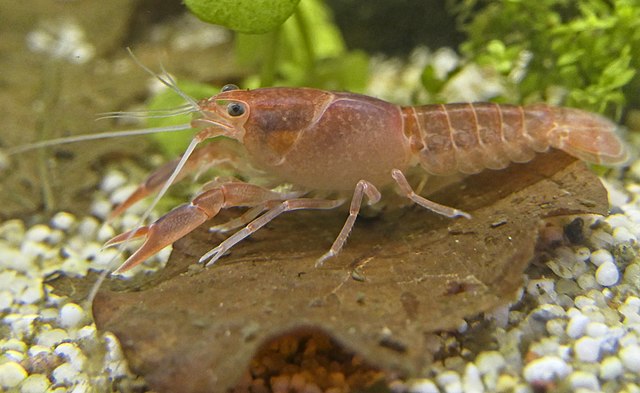Shrimp:
What is it?, history, cultivation, nutritional value, uses, recipes, and more...
The shrimp belongs to the superfamily Penaeoidea, and currently there are 10 genera and species in the Peruvian sea. It is a crustacean with high nutritional content and significant commercial value. In the northern regions of Peru, they are caught in waters ranging from 1 to 30 meters deep (white and blue shrimp), while in deeper waters (30 to 50 meters), the brown and red varieties are more abundant.
Índice
What is the Shrimp?
Shrimp, or Penaeidae, are decapod crustaceans belonging to the family Penaeidae. They are swimmers classified in the infraorder Caridea and their length ranges from 12 to 23 centimeters, depending on the species. They can be found in oceans all around the world. In open seas, they exhibit two main migratory movements related to their growth and maturation.
In Peru, we primarily produce the white shrimp, Litopenaeus vannamei, which has a whitish to yellowish color with the dorsal part of the carapace slightly darker. Their face has eight or nine upper teeth and one or two lower teeth anterior to the epigastric tooth.
These animals inhabit sandy beaches and river estuaries, ranging from shallow waters of 5 to 70 meters deep, up to 100 meters.
History of the Shrimp
It is known that shrimps were already used in Roman cuisine during the 1st century AD, as mentioned by Apicius in his book “De re coquinaria,” where he discusses their use as an ingredient to prepare a type of garum, a fish sauce made from fermented fish viscera, called Alec. This dish was consumed as an appetizer or starter, accompanying fish dishes.
Later, during the 17th century, shrimps were mentioned alongside various species of fish and seafood in various European cookbooks.
By the 20th century, shrimps became a significant species for fishing in Latin America. Regarding the white shrimp, the most produced species in the country, it was introduced for aquaculture, the cultivation of aquatic species, in Florida in 1973. Cultivation of L. vannamei then expanded to Southeast Asia and different countries in Latin America, including Peru.
In 2010, Greenpeace included this shrimp variety in its red list of fish and seafood because they have a “very high risk of being obtained from unsustainable fishing.” They warned that “large areas of mangroves in many countries were destroyed to catch juvenile shrimp in the wild to supply shrimp farms, and significant human rights violations occurred.” Additionally, the degradation of coastal environments also affects natural populations of L. vannamei since indiscriminate deforestation, logging, mining, among others, generate a significant amount of sediments and chemical and organic pollutants that accumulate in the brackish waters where L. vannamei larvae and juveniles are commonly found, leading to various diseases.

Common Name of the Shrimp
| Portugues | Camarâo |
| French | Caramote, Caramote prawn |
| Spanish | Langostino blanco, camarón blanco |
| English | White shrimp |
Scientific Name of the Shrimp
Familia Penaeidae
Taxonomy of the Shrimp
| Kingdom | Animalia |
| Filo | Arthropoda |
| Subfilo | Crustacea |
| Class | Malacostraca |
| Order | Decapoda |
| Suborder | Dendrobranchiata |
| Infraorder | Caridea |
| Superfamily | Penaeoidea |
| Family | Penaeidae |
Synonymy of the Shrimp
In the case of the white shrimp: Litopenaeus vannamei
Etymology of the Shrimp
The word “langostino” comes from “langosta,” a word derived from the Latin “Locusta,” and “-ino.”
Habitat of the Shrimp
- Habitat
Shrimps from the Penaeidae family are distributed from the Gulf of California, Mexico, to Paita. In the case of white shrimps, the most abundant in Peru, they are found from the northern Gulf of California to Tumbes.
They inhabit sandy bottoms and can be found at depths ranging from 5 to 70 meters. When they reach the post-larval stage, currents bring them closer to the coasts, where they enter estuaries and esteros (coastal inlets), growing rapidly due to the rich substrate of aquatic vegetation and organic matter provided by mangroves. They then return to oceanic waters in the pre-adult stage.
The El Niño phenomenon tends to lead to an increase in the quantity of shrimps in the region.
Regarding their reproduction, this species displays sexual dimorphism. In male specimens, a structure known as the petasma, located on the first pair of pleopods, is used to transfer spermatophores to the female's seminal receptacle. The mating process starts with the female shedding its skin, which lasts for four to five hours. Then, the male begins the courtship, which lasts for several hours. Both fertilization and spawning occur in the water. It is estimated that female shrimps can lay eggs three or four times a year, producing more than 100,000 eggs at a time. Generally, larger females produce more eggs than smaller ones.
Geographical Distribution of the Shrimp

Amazonas, Ancash, Apurímac, Arequipa, Ayacucho, Cajamarca, Cusco, Huancavelica, Huánuco, Junín, La Libertad, Lima, Pasco, Piura, Puno y Tumbes
Seasonal Availability of the Shrimp
- Throughout the year
Varieties of the Shrimp
Shrimps belong to the superfamily Penaeoidea.
-
Penaeoidea Superfamily
It is further divided into four families: Aristeidae, Penaeidae, Sicyonidae, Solenoceridae.
Nutritional Value of the Shrimp
In terms of minerals, shrimps provide magnesium, a macronutrient that strengthens the skeletal system and protects blood vessel walls; selenium, which stimulates the immune system; and iron, which prevents and treats anemia.
Shrimps are an excellent source of protein necessary for muscle growth while having low fat and carbohydrate content. 100 grams of shrimps provide only 0.80 grams of fat and 110 kilocalories.
Furthermore, they provide omega-3 fatty acids, which help prevent cardiovascular diseases and reduce cholesterol levels. Shrimps are also rich in iron, calcium, and phosphorus, important nutrients for combating anemia and promoting egg and tooth development.
Shrimps also contain a high amount of vitamins and minerals, including vitamin B3 (niacin), which aids in the utilization of proteins, carbohydrates, and fats, as well as in the production of sex hormones and glycogen synthesis; vitamin B9, useful for preventing defects in the placenta, brain, and spinal cord of the fetus during pregnancy; vitamin B12, important for the proper functioning of neurons and red blood cell maturation; and vitamin E, well-known for its antioxidant benefits and cancer-preventive effects.
They also provide, to a lesser extent, vitamins B1 and B2.
Regarding mineral content, shrimps are notably rich in magnesium, which favors the transmission of nerve impulses, strengthens the skeletal system, and helps maintain stable blood pressure, among other benefits. They also contain selenium, which stimulates the immune system and helps protect the body against cardiovascular diseases.
Health Benefits of the Shrimp
Shrimps are an excellent source of protein, omega-3 fatty acids, and contain a high level of vitamins and minerals beneficial for the body.
Contraindications or Side Effects
While shrimps are a food with proven nutritional value, they should be consumed in moderation as they also contribute to cholesterol and may increase uric acid levels. Due to their high sodium content, their consumption is not recommended for individuals with hypertension.
Proper cooking is important to prevent intoxication, and they should be avoided in case of allergies.
Consumption is not advised for children under 10 and pregnant individuals.
Additionally, shrimps tend to accumulate sulfites and cadmium in their heads, so consumption of this part of their body is discouraged. Sulfites are additives used to prevent discoloration of seafood and can trigger asthma attacks in individuals with this condition, as well as hives and angioedema in healthy individuals.
Cadmium, on the other hand, is a metal that, once ingested, accumulates in the kidneys where it can cause kidney damage. It also has other undesirable effects such as diarrhea, stomach pain, reproductive alteration, or immune system disorders.
| 10 Porciones por Kilogramo | |
| Tamaño de porción | 100g |
| Cantidad por porción Calorías |
69 |
| Cantidad por 100g | |
| Energía | 289 kJ |
| Grasa Total | 0.8 g |
| Sodio | ● |
| Carbohidratos totales | ● |
| Carbohidratos disponibles | ● |
| Fibra Dietaria | ● |
| Proteínas | 14.5 g |
| Calcio | 89 mg |
| Fósforo | ● |
| Zinc | ● |
| Hierro | 2.03 mg |
| Potasio | ● |
| Agua | 83.8 g |
| Cenizas | 1.1 g |
| Vitamina A | ● |
| Tiamina (B1) | ● |
| Riboflavina (B2) | ● |
| Niacina (B3) | ● |
| Vitamina C | ● |
| Acido Fólico (B9) | ● |
| β-Caroteno | 0 μg |
| Fuente: Tablas peruanas de composición de alimentos – Centro Nacional de Alimentación y Nutrición – Ministerio de Salud – Perú | |
Derived Products and Methods of Shrimp Consumption
Uses of the Shrimp
Shrimps are primarily used for human consumption and the commercial utilization that their consumption generates in the market.
- Culinary
- Medicinal
- Industrial
- Ritual
Culinary Use of the Shrimp
Shrimps are available throughout the year mainly in two forms: fresh or frozen. In Asia, dried shrimp preparations are used as a seasoning.
When choosing fresh shrimps, look for a shiny and hard shell with a marine aroma, and avoid specimens with an ammonia smell, which indicates lack of freshness.
Common preparations of fresh shrimps include grilling and boiling. Shrimps are boiled in a pot of water with plenty of salt for a few minutes, then drained and placed in ice water to cool quickly and preserve the firmness of their flesh.
This species can be used in a multitude of dishes, including seafood cuisine such as ceviches, chowders, rice dishes with seafood, and jellies, as well as cocktails, soups, salads, appetizers, paellas, pasta, and many more. Most recipes require peeled and cooked shrimps.
Medicinal Use of the Shrimp
Shrimps have nutritional characteristics similar to other species of their same genus, making them highly desirable in a balanced diet. These include their richness in proteins, vitamins, and minerals. Notable vitamins include groups B and D, which contribute to the synthesis of genetic material, the production of sex hormones, or the formation of red blood cells. Its most representative minerals are iron, phosphorus, and iodine, with the latter even tripling the levels found in shrimp.
Industrial Use of the Shrimp
The largest industry related to shrimps is aquaculture. Shrimp farming is one of the fastest-growing sectors in global aquaculture.
The most cultivated shrimp species in Peru is the white shrimp, a cultivation that started in the 1970s and continues to grow.
The shrimp export sector is also a significant industry. According to the Association of Exporters (Adex), in Peru, only in the first quarter of 2021, $36,150,000 were obtained from shrimp exports, a 20.4% increase compared to the same period in 2020. Shrimp ranked as the most exported aquaculture species in that period, with a 45.4% share.
Ritual Use of the Shrimp
The Incas attributed magical forces to quinoa, turning the cultivation's planting and harvesting into religious festivals. However, when Spanish conquistadors arrived in the Andean countries and learned of quinoa's importance, they rejected and prohibited it. It is believed that they acted this way out of fear of the "magic quinoa," as quinoa consumption and ceremonies related to it could provide indigenous people with extraordinary strength and endanger their conquest.
Today, quinoa is used in traditional Andean rituals, as an offering to Pachamama (Mother Earth), and the "Quinua Mama" festival is still celebrated in Puno. According to Inca traditions, at the beginning of quinoa harvest in the Andes, ancient Peruvian farmers performed a special invocation to "Quinua Mama," the pre-Hispanic goddess of the grain, for an abundant harvest. This ritual involved toasting the first seeds while girls and women made dolls with quinoa leaves and grains, preserved for a year to be burned as a sign of renewal.
- es.wikipedia.org
- ictioterm.es
- lavanguardia.com
- pescaderiascorunesas.es
- medium.com
- regmurcia.com
- es.wikipedia.org
- tumi.lamolina.edu.pe
- peru.info
- export.promperu.gob.pe
- proyectosperuanos.com
- produce.gob.pe
- es.wikipedia.org
- etimologias.dechile.net
- vip.ucaldas.edu.co
- fao.org
- elespanol.com
- elpais.com
- fao.org
- animales.website



